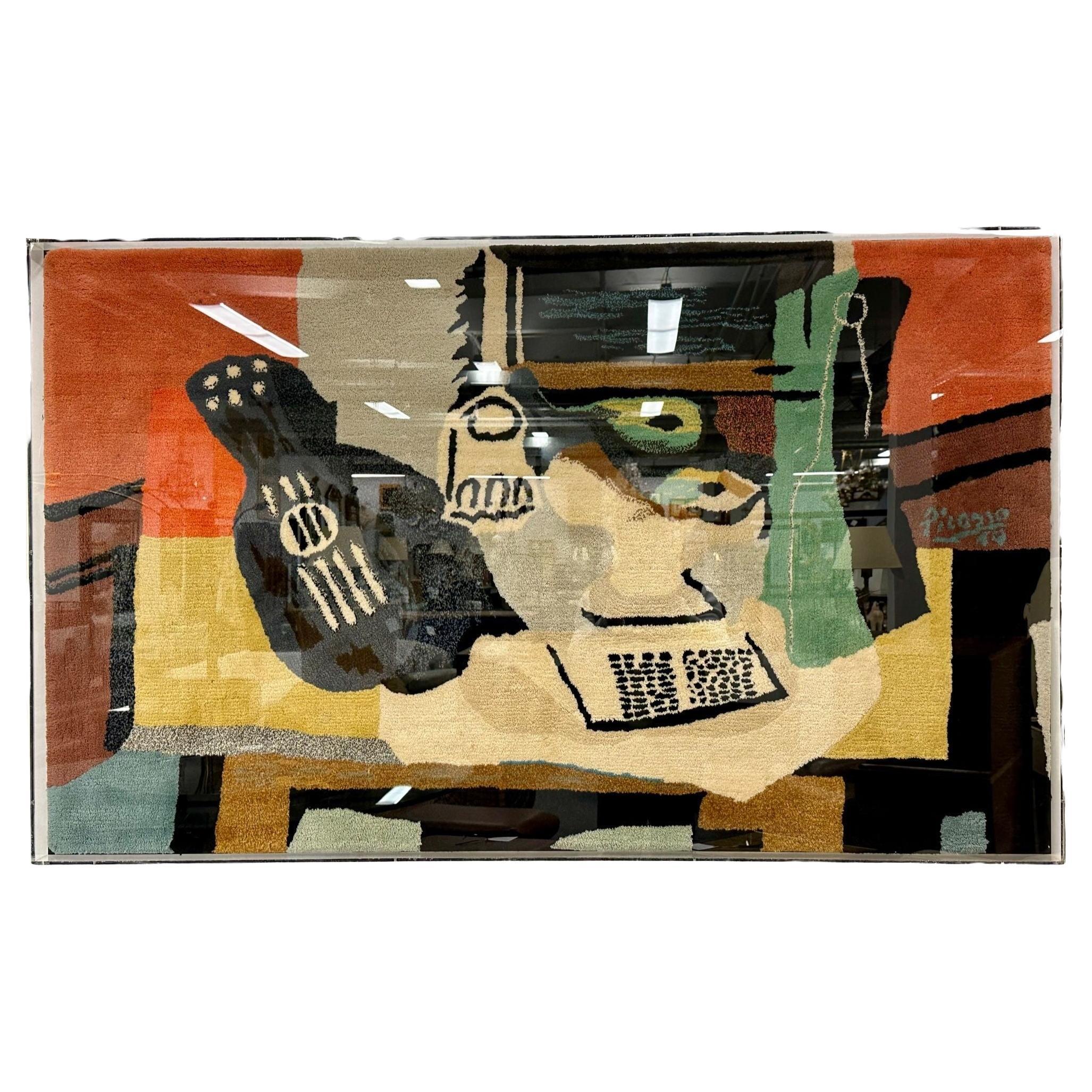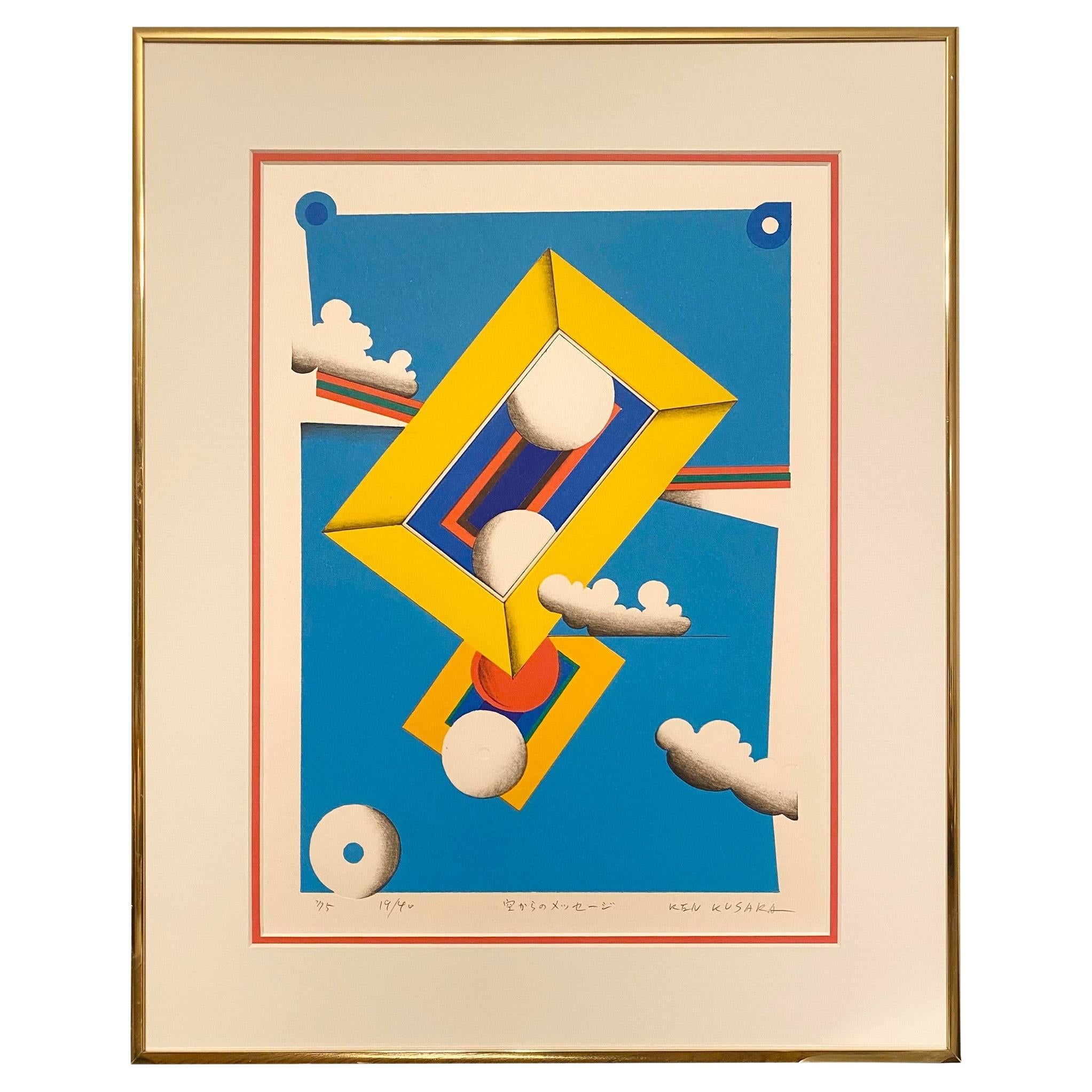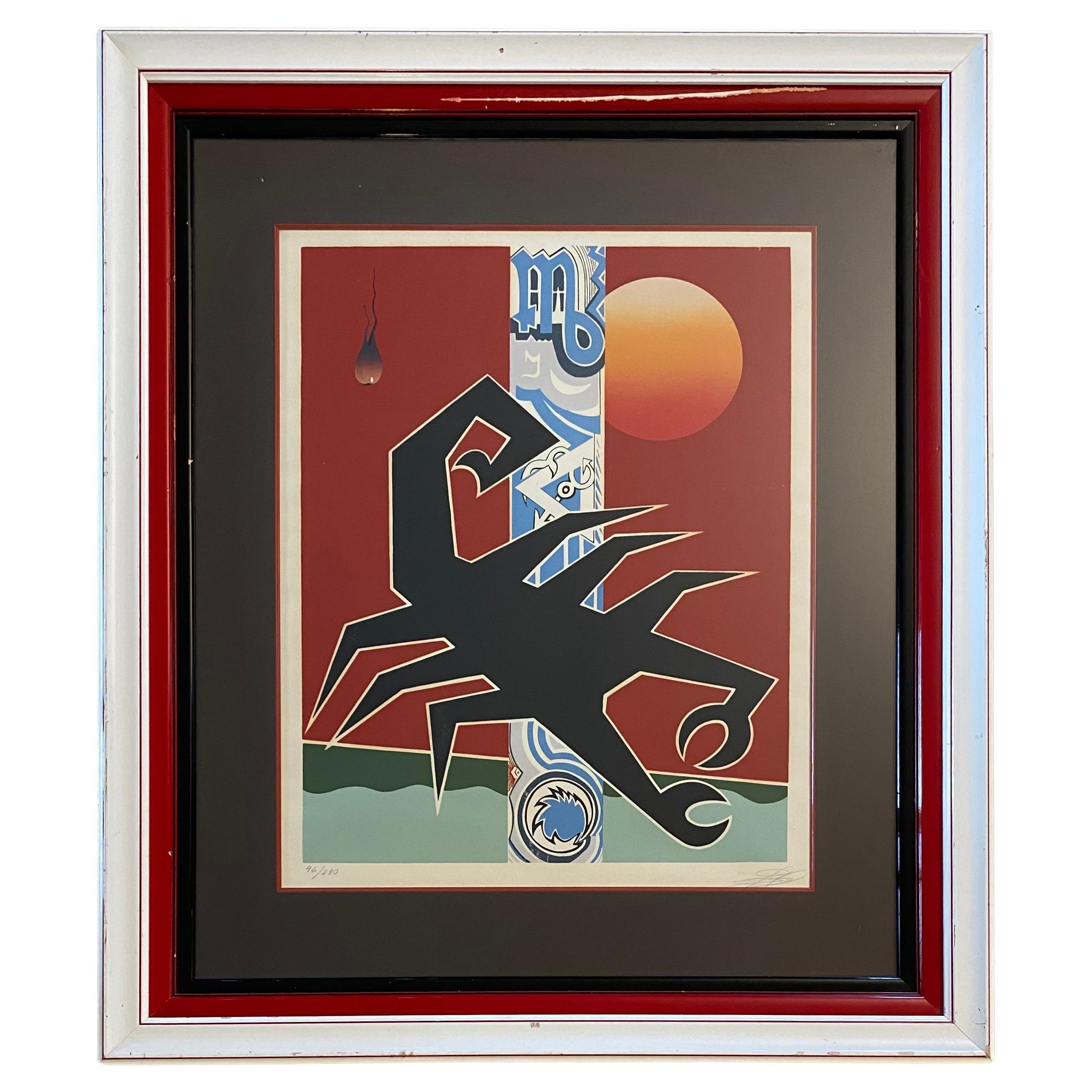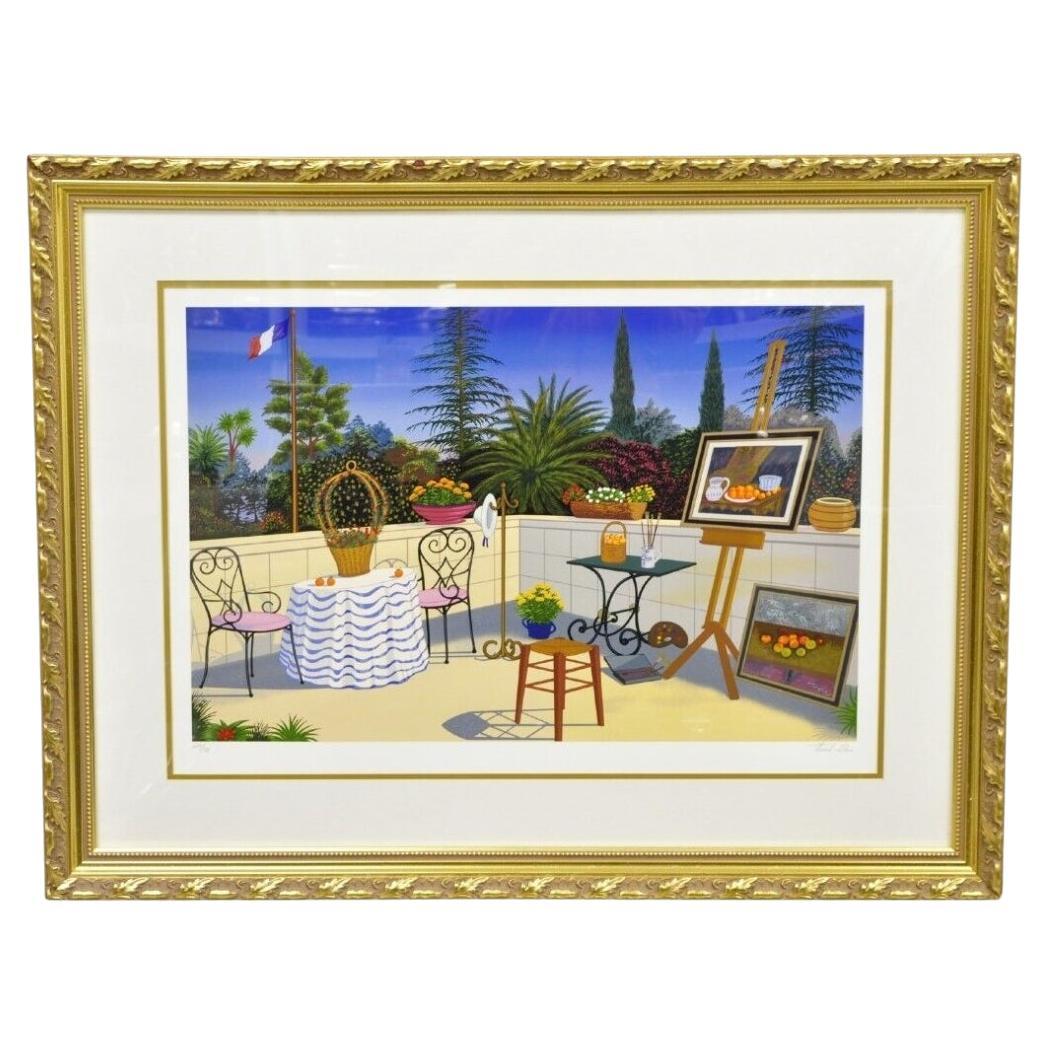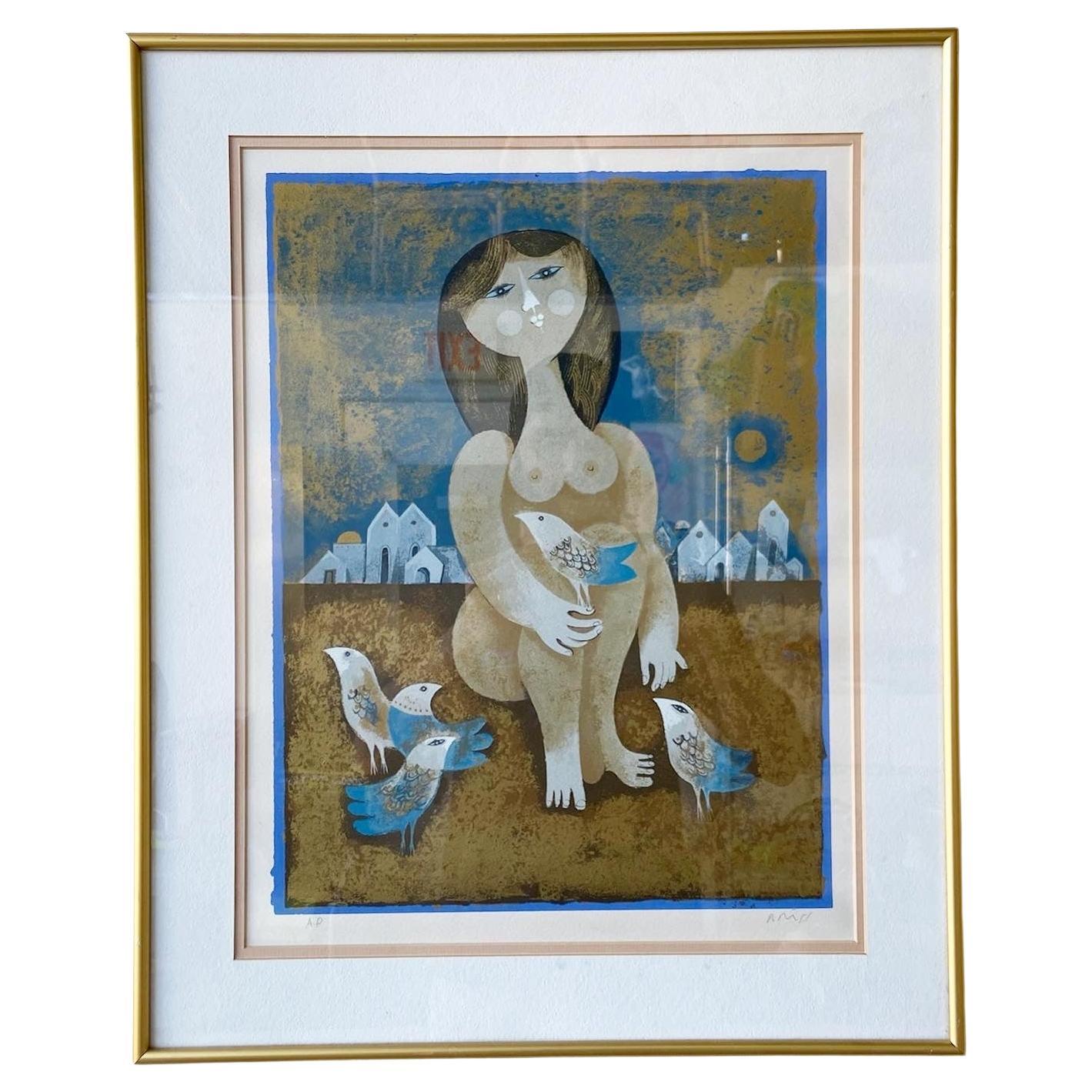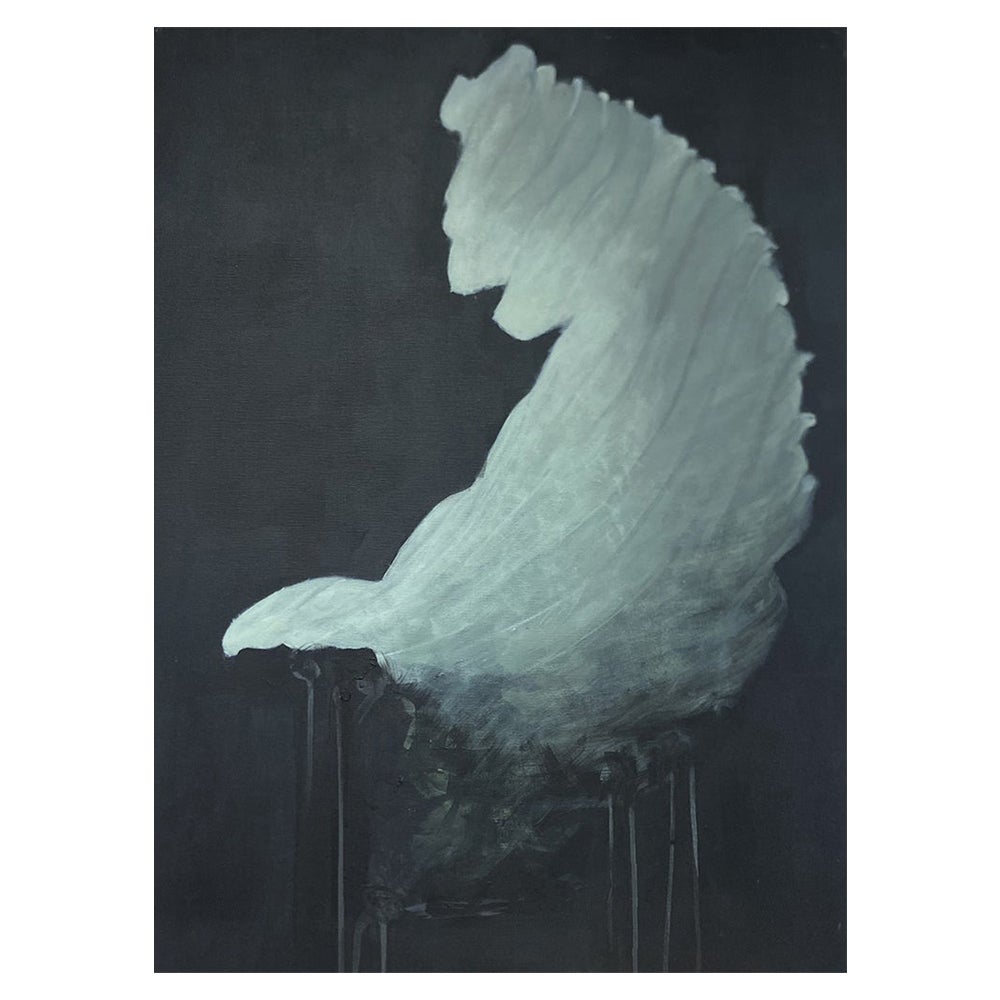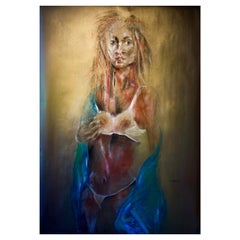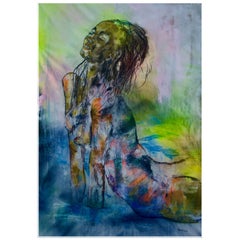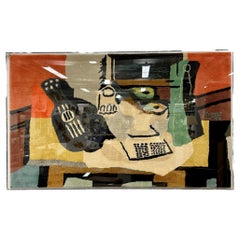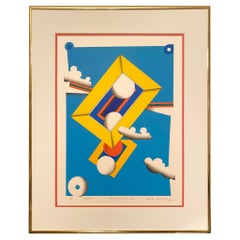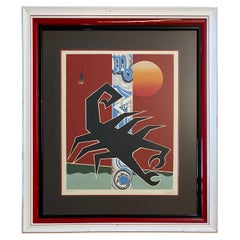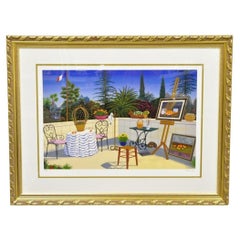Items Similar to Alexandra Nechita "Your Guitar My Music" Hand Signed Ltd Ed Lithograph-Framed
Want more images or videos?
Request additional images or videos from the seller
1 of 9
Alexandra Nechita "Your Guitar My Music" Hand Signed Ltd Ed Lithograph-Framed
About the Item
Alexandra Nechita "Your Guitar my music" 1997 Print - Lithograph on handpulled on Archival Paper in Paris 41.5'' x 34.5'' in Paris. Edition: Signed in pencil and marked 131/250 From the Musical Muses Series. Image size 31" x 24.5" Dark frame with red accents and gold edge. Know as the child prodigy and as "Petite Picasso" Alexandra is know for her surrealist and abstract cubist style like Picasso and Braque. Alexandra started painting at the age of 3 and by the age of 9 had had solo exhibits in NYC and LA.
This piece was appraised by the Dyansen Gallery in 1999 without the frame for $3250.
- Similar to:(after) Pablo Picasso (Artist)
- Dimensions:Height: 41.5 in (105.41 cm)Width: 34.5 in (87.63 cm)Depth: 2.5 in (6.35 cm)
- Materials and Techniques:
- Period:
- Date of Manufacture:1997
- Condition:
- Seller Location:New York City, NY
- Reference Number:1stDibs: LU5191125689832
Farrago Design Inc
Farrago Design is a tribute to craftsmanship and creativity. Our story begins in 2003 with a passion for creating timeless bespoke pieces inspired by nature and the artistry of human hands. Our designs reflect a profound reverence for heritage and a commitment to excellence.
At Farrago Design, we believe that true opulence is achieved by an uncompromising attention to detail, a devotion to the craft, and the use of the finest materials. Our team of skilled artisans and designers collaborate with the world's most talented craftsmen to produce unparalleled, exclusive pieces. Our materials are carefully and sustainably sourced and include rare woods, sand casted metals, bone, and semi-precious stones, resulting in truly unique works of art. Our custom furniture designs are tailored to meet the specific needs of our clients, including some of the most prominent AD 100 interior designers and architects. We believe that every object in your home, office, or yacht should evoke a sense of joy and it is our privilege to share this vision with you.
About the Seller
No Reviews Yet
Vetted Professional Seller
Every seller passes strict standards for authenticity and reliability
Established in 2003
1stDibs seller since 2020
12 sales on 1stDibs
Typical response time: 1 hour
- ShippingRetrieving quote...Shipping from: New York, NY
- Return Policy
Authenticity Guarantee
In the unlikely event there’s an issue with an item’s authenticity, contact us within 1 year for a full refund. DetailsMoney-Back Guarantee
If your item is not as described, is damaged in transit, or does not arrive, contact us within 7 days for a full refund. Details24-Hour Cancellation
You have a 24-hour grace period in which to reconsider your purchase, with no questions asked.Vetted Professional Sellers
Our world-class sellers must adhere to strict standards for service and quality, maintaining the integrity of our listings.Price-Match Guarantee
If you find that a seller listed the same item for a lower price elsewhere, we’ll match it.Trusted Global Delivery
Our best-in-class carrier network provides specialized shipping options worldwide, including custom delivery.More From This Seller
View AllHilary Opperman Mixed Media Collage: "Angels upon Us"
By Richard Hamilton
Located in New York City, NY
This captivating mixed media artwork by Hilary Opperman masterfully combines collage techniques with painting to create a vibrant dreamscape dominated by lush purples and pinks. The ...
Category
2010s Modern Contemporary Art
Materials
Paint, Paper
Bone Inlaid Wall Art in Blue Resin with Celtic Dragon Pattern
By Enrique Garcel
Located in New York City, NY
Embark on a captivating journey to a time teeming with rich tales, legendary creatures, and exceptional craftsmanship. Introducing our Bone Inlaid Celtic Dragon Wall Art...
Category
Antique Early 19th Century Unknown Hollywood Regency Decorative Art
Materials
Bone
My eyes on you -Mixed Media Painting by Steven Colucci
By Jackson Pollock
Located in New York City, NY
Steven Colucci is a perfectionist. As a painter, he describes himself as “a dictator, a controlling ballet master with a stick,” dispassionately choreographing his composition to achieve the exact result he desires. The paintings of the “Sea Series,” largely completed in 2010, are actually the culmination of 4-5 years of practice for the artist, during which he consistently developed and refined the language and formal elements that visually distinguish the series, sometimes repeating the same image for months until he was satisfied.
Colucci’s methods and philosophy reflect his experience with movement as a performing art. While he studied with and admires Vito Acconci, Colucci is no proponent of conceptualism, finding his voice in the intense discipline of traditional forms, explaining, “If you don’t practice art like a classical pianist, every day, you can’t execute your concepts.” After completing his studies at New York’s School of Visual Arts, he moved to Paris, where he studied and performed mime and ballet, working closely with Marcel Marceau, who also painted, and Etienne Decroux, a sculptor as well as the originator of the form “classical mime,” which has roots in the sculpture of Rodin.
If the word “sea” in the title of a painting conjures for you images of little easels and landscape canvases featuring sandy beaches, waves, and vast horizons, think again – Colucci’s oceanic visions are experiential, viewing them you are often looking down at the sea, within it, or even dreaming of the ocean. Water, deep or shallow, still or fast-moving, rules how we see light and subjects, as the artist works to reflect what he calls “the spirit, the soul of the water.” In “Deep Blue,” he conjures this anima via a window through levels of roiling currents of rich dark waves and dancing highlights, inviting the viewer to experience the sea as a vibrant and enveloping sensual entity.
Colors, too, differ from the subdued palette of the seaside afternoon painter. Often his choices originate in what Colucci describes as the rhythm of color present in Afro-Carribean art and design. In the paintings, these hues express the water’s likeness to the seamless flow of the Dominican culture’s music and dance, which he so enjoys during frequent visits to Upper Manhattan’s El Barrio district, a movement with the melodic line that he so simply and perfectly employs in the delightfully sexy “Swimming with the Fish.”
As our bodies, like the sea, are largely water, Colucci’s water visions...
Category
2010s Paintings
Materials
Acrylic
Mixed Media Painting by Steven Colucci- My eyes on you
By Andrzej Galek
Located in New York City, NY
Steven Colucci’s iconoclastic approach to performance and the visual arts
have not only long blurred the boundaries between these disciplines, but have
challenged its most basic assumptions. The title of this show references a
most rudimentary dance move --the plié --and our assumptions of what to
expect in relation to this. Also the suggestion that we can simply press a
button and a preconceived outcome will be courteously delivered --a form of
prefabricated belief in itself. Steven Colucci’s artwork turns such basic
assumptions on their heads. Finding early inspiration in the New York school
of abstract expressionists such as Jackson Pollock with his action painting,
and then further by his professor --a then young Vito Acconci while studying
at the School of Visual Arts, Steven Colucci went from exploring the raw
existentialist experimentation of New York’s early painting and performance
scenes, to investigating the other end of the spectrum --the rigorously
measured and controlled disciplines of pantomime and ballet; studying in
Paris under the tutelage of world-famous Marcelle Marceau, and engaging
with the concepts of dramatic movement pioneer and intellectual Etienne
Decroux. Colucci has explained the difference between the extremes of
pantomime and dance as being that pantomime forces movement via an
internal capacity --movement directed inward to the core of one’s self --a
source requiring extreme mental and physical control. Dance by contrast is
an external expression; likewise requiring great precision, although instead
an extension of self or sentiment that projects outwardly. While such
historical ‘movement’ disciplines serve as foundation blocks for Steven’s
artistic explorations, it is the realm in between that he is best known for his
contributions --an experimental movement and performance art that
simultaneously honors, yet defiantly refutes tradition; rejecting a
compartmentalization regarding art and movement, yet incorporating its
elements into his own brand of experimental pastiche. Colucci’s performance
works manifest as eerily candy-coated and familiar, yet incorporate
unexpected jags of the uncanny throughout, exploiting a sort of coulrophobia
in the viewer; an exploration of a cumulative artifice that binds human
nature against its darker tendencies; highlighting traditions of artifice itself -
the fabricated systemologies that necessitate compartmentalization in the
first place.
It is evident in Steven Colucci’s paintings that he has established a uniquely
distinctive pictorial vocabulary; a strong allusion to --or moreso an extension
of --his performance works. Colucci’s paintings depict a sort of kinetic
spectrum, or as he refers to them “a technical expression of physicality and
movement”. Whereas the French performance and visual artist Yves Klein
used the human body as a “paint brush” to demarcate his paintings and
thereby signify a residue of performance, Colucci’s utilization of nonsensical
numbers and number sequences taken from dance scores, as well as heat-
induced image abstraction depicting traces of movement likewise inform his
vocabulary. In the strand of the choreographed, yet incorporating moments of
chance, Colucci’s paintings represent an over arching structure; a rhythm of
being and state, yet detail erratic moments --moments that denote a certain
frailty --the edge of human stamina. Colucci’s paintings dually represent a
form of gestural abstraction --and also the reverse of this --a unique
anthropomorphization of varying states of movement – that sometimes
present as a temperature induced color field, at others are juxtapositions of
movement and depictions of physical gestural images themselves. Colucci’s
use of vernacular and found materials such as cardboard evoke his mastery of
set design, and also reference a sort of collective experience of urbanity and
the ephemeral. Such contradictions seem to permeate not only Steven
Colucci’s artwork, but also are reflected in his person – one who grew up in
New York’s Bronx during a zeitgeist moment in visual and performing arts in
the 1960s – one who shifts with ease from happenings and experiments in
New York City, to his meticulously choreographed megaproductions at
Lincoln Center or starring in the Paris ballet...
Category
2010s Paintings
Materials
Acrylic
Hand Sculpted, Cast Aluminum Mirror- Mannara Mirror
By Alastair Michie
Located in New York City, NY
inspired by nature and realized by a technique developed especially for Farrago Design, this sculpture mirror is individually sand-cast in Aluminum. The molds are hand-carved in pack...
Category
2010s Wall Mirrors
Materials
Aluminum
Tall Mirror Mirror with Brulalist Textured Frame, Solace
By Paul Evans
Located in New York City, NY
Discover a sculpted Silver mirror that champions one piece at a time.The narrative behind this tall mirror stems from innovative craftsmanship, utilizing a unique technique to mold a...
Category
2010s Brutalist Floor Mirrors and Full-Length Mirrors
Materials
Fiberglass
You May Also Like
Framed Carpet, Picasso's 'Guitar, Glass, and Fruit Dish' Rug, Decorative Art
By (after) Pablo Picasso
Located in Manhasset, NY
Framed Rug, Picasso's 'Guitar, Glass, and Fruit Dish' Decorative Art
A wonderfully done abstract carpet in the manner of Picasso framed in a custom Luc...
Category
Vintage 1980s American Mid-Century Modern Decorative Art
Materials
Lucite
Ken Kusaka Signed + Framed Postmodern Lithograph
By Ken Kusaka
Located in Round Top, TX
Signed lithographic woodblock print by Kenji (Ken) Kusaka.
Mr. Kusaka's work is in the collections of important collections such as the Museum of Modern Art in New York, The British...
Category
Late 20th Century Japanese Post-Modern Contemporary Art
Materials
Aluminum
$1,288 Sale Price
48% Off
Lithograph by Waykeri Rawlinson, Hand Signed
Located in Miami, FL
A very decorative, original lithograph.
Hand signed in pencil.
Numbered 46/280
Underneath the signature appears that the name of the artist printed on the paper: Waykeri Rawlinson. ...
Category
20th Century American Modern Contemporary Art
Materials
Paper
$1,080 Sale Price
44% Off
Limited Ed. Signed Fanch (Francois Ledan) Lithograph Atelier de Cezanne Artwork
Located in Philadelphia, PA
Limited Ed. Signed Fanch (Francois Ledan) Lithograph Atelier de Cezanne. Item featured is signed to bottom right corner, limited numbered edition 220/395, "Large original signed limi...
Category
1990s Country Contemporary Art
Materials
Glass, Paper
Framed and Signed Lithograph by Sam Briss
Located in Delray Beach, FL
Exceptional vintage signed and framed lithograph by Sam Briss. Features a surreal depiction of a nude woman with birds.
Category
Vintage 1970s Mid-Century Modern Prints
Materials
Glass, Paper
My house is your house, 2018, Rita Alaoui
Located in PARIS, FR
Rita Alaoui seeks to explore and rethink our relationship with the wild world and to imagine connections with the extraordinary. Fascinated by the power of nature and concerned about...
Category
2010s French Other Contemporary Art
Materials
Canvas, Acrylic
